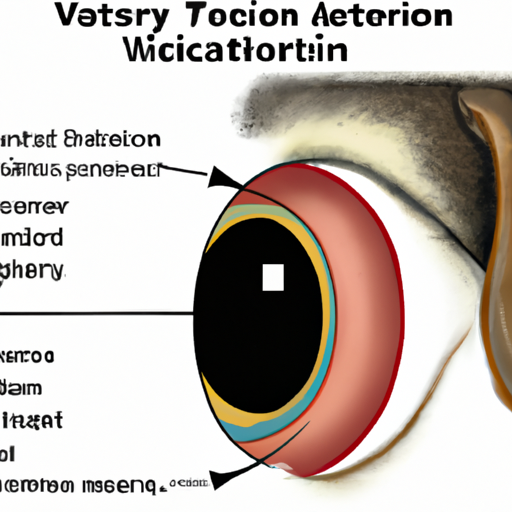As a loving caregiver, you have probably noticed that your furry friend’s eyes are not as bright and clear as they used to be. In fact, they may seem clouded or foggy. This could be a sign that your dog is developing cataracts. But what causes cataracts in dogs? Let’s explore.
1. The Basics: Understanding Cataracts
Cataracts are a common eye condition that can affect dogs of all breeds and ages. They occur when the normally transparent lens of the eye becomes clouded or opaque, which can lead to vision loss.
2. Common Causes of Cataracts in Dogs
There are several factors that can contribute to the development of cataracts in dogs.
2.1. Age
Just like humans, dogs can develop cataracts as they age. This is because the lens of the eye naturally hardens and loses its flexibility over time.
2.2. Genetics
Certain breeds are more prone to developing cataracts than others. These include the Cocker Spaniel, Poodle, Siberian Husky, and Boston Terrier, among others.
2.3. Disease
Certain diseases, such as diabetes, can also cause cataracts in dogs. In fact, over 75% of dogs with diabetes will develop cataracts within a year of diagnosis.
2.4. Trauma
Sometimes, cataracts can develop as a result of trauma to the eye.
2.5. Nutrition
Poor nutrition, particularly during a dog’s puppy years, can also contribute to the development of cataracts.
To illustrate, here is a table summarizing the main causes:
| Cause | Description |
|---|---|
| Age | The lens hardens and loses flexibility over time. |
| Genetics | Some breeds are more prone to cataracts. |
| Disease | Diseases like diabetes can cause cataracts. |
| Trauma | Injuries to the eye can lead to cataracts. |
| Nutrition | Poor nutrition can contribute to the development of cataracts. |
3. How to Prevent Cataracts in Dogs
Although not all cataracts can be prevented, there are steps you can take to reduce your dog’s risk.
-
Provide a balanced diet. A diet rich in antioxidants, such as vitamin C and E, can help protect your dog’s eyes.
-
Regular check-ups. Regular vet check-ups can help detect early signs of eye disease.
-
Protect their eyes. When outside, protect your dog’s eyes from direct sunlight and avoid situations that could lead to eye injuries.
-
Control underlying diseases. If your dog has a disease like diabetes, proper management can reduce the risk of cataracts.
4. Treatment Options for Cataracts in Dogs
Treatment for cataracts in dogs can vary depending on the severity of the condition. Options may include:
- Surgical removal
- Anti-inflammatory eye drops
- Lens replacement surgery
Remember, early detection and treatment can greatly improve your dog’s prognosis.
5. Frequently Asked Questions (FAQs)
To wrap up, here are some quick answers to common questions about cataracts in dogs.
Q: Can cataracts in dogs be reversed?
A: No, cataracts cannot be reversed. However, they can be managed and treated to prevent further vision loss.
Q: Can cataracts cause blindness in dogs?
A: Yes, if left untreated, cataracts can lead to blindness.
Q: Are cataracts painful for dogs?
A: Not usually, but inflammation or high eye pressure associated with cataracts can cause discomfort.
Q: Can a dog live with cataracts?
A: Yes, many dogs live healthy, happy lives with cataracts. However, treatment can improve their quality of life.
Remember, it’s important to consult with your vet if you suspect your dog has cataracts. They can provide the best advice and treatment options for your furry friend.



